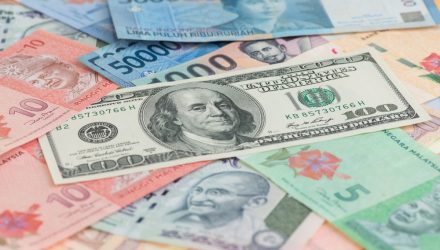As markets rebound and fixed-income investors shift to a risk-on mood, emerging market bond exchange traded are enjoying greater interest despite ongoing concerns over potential defaults.
For example, the iShares J.P. Morgan USD Emerging Markets Bond ETF (EMB), the largest emerging market bond-related ETF by assets, as attracted $542 million in net inflows so far this month, according to ETFdb data.
Meanwhile, the spread, or extra yield, investors demand from speculative-grade debt and tracked by a key emerging market bond index from JPMorgan Chase & Co. over U.S. Treasurys shrunk to 8.2 percentage points Friday, the Wall Street Journal reports. In comparison, the spread had expanded to 12 points in late March, topping the 11.6 points reached during the 2008 financial crisis, as investors dumped riskier assets in favor of safe-haven, government bonds to weather the storm.
The coronavirus pandemic and a plunge in commodity prices, notably oil, have increased the risk of defaults in many emerging countries like Zambia and Ecuador. Governments in some emerging markets have been particularly hard hit as many try to raise spending on health care and stimulus measures in a bid to support their flagging economies.
Meanwhile, quickly depreciating emerging currencies further threatened to raise the cost of foreign debt payments.
“The problem with markets is that they overreact, they end up pricing in far more defaults than we get,” Jan Dehn, head of research at Ashmore Group, told the WSJ. “The real reason why these markets are reeling so much is because they shouldn’t have been sold in the first place.”
Even before the pandemic-induce selling, emerging economies like Venezuela, Argentina and Lebanon were already at risk of defaulting on sovereign bonds. In recent weeks, Zambia and Ecuador have also moved toward restructuring debt.
However, some investors see a buying opportunity in this oversold segment. Dehn calculated that tracking the JPMorgan’s Emerging Market Bond Index Global Diversified index could generate a 32% in dollar terms over five years after accounting for compound returns and assuming yields and currencies remain unchanged. In comparison, he believed an investor would generate a 55% return for the high-yield part of the index alone or a 3.8% for 10-year Treasuries over the next five years.
For more information on the fixed-income market, visit our bond ETFs category.
